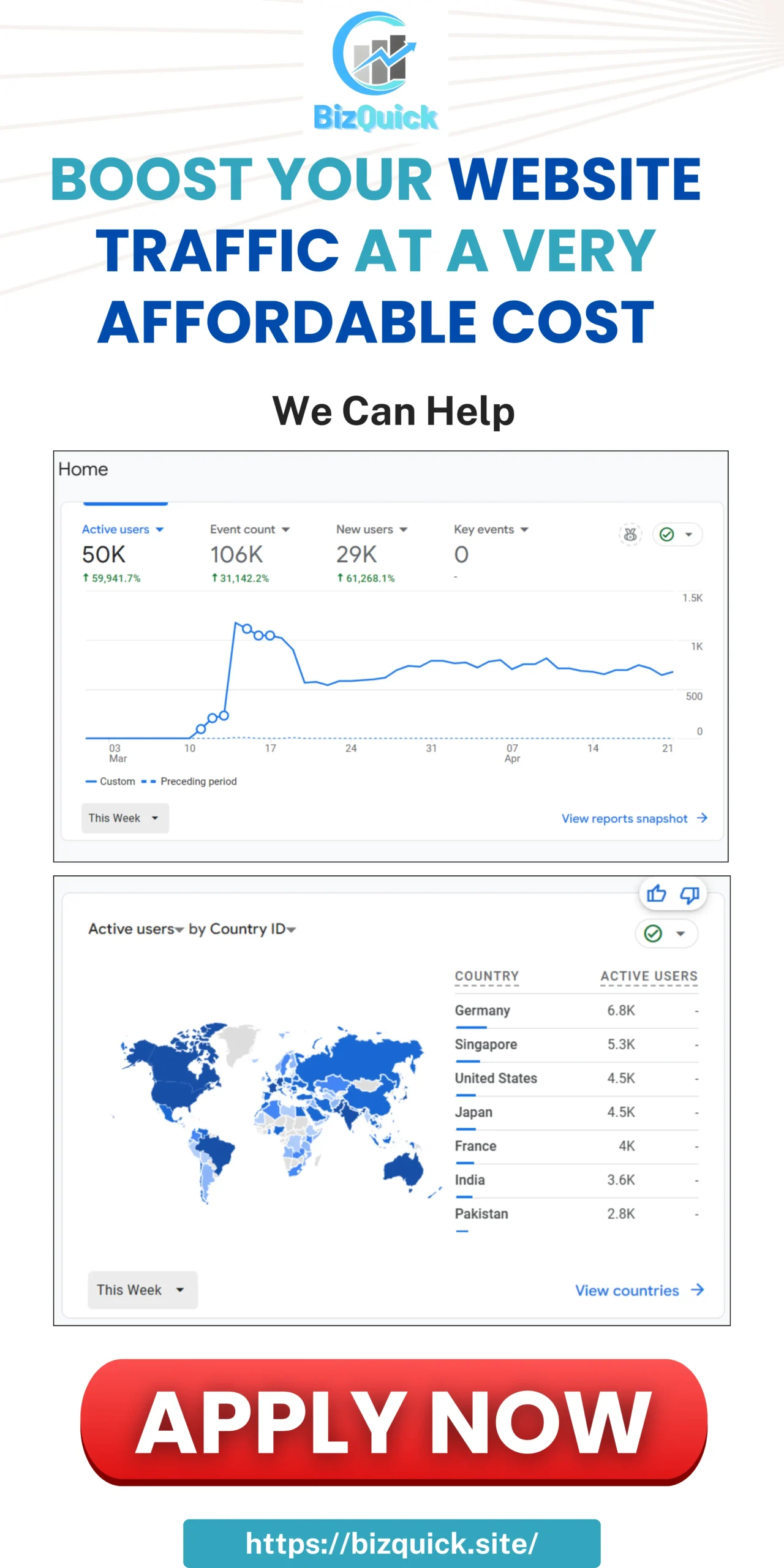Many of us wonder if paying for traffic is a good idea. In the digital marketing world, it’s key to look at both sides of using paid traffic. The good points include more people seeing your brand and ads that hit the right audience. But, there are downsides like spending a lot and ads getting old fast.
When deciding on paid traffic, we must think about our marketing aims and plans. Is it right for our business? The answer depends on knowing the good and bad of paid traffic and smart budgeting. By looking at both sides, we can make campaigns that work well.
Here Is Why Paid Traffic Is Important
- Paid traffic can be an effective way to increase brand awareness and drive conversions.
- Understanding paid traffic pros and cons is key for smart marketing choices.
- Paid traffic can be costly, and ad fatigue is a big drawback.
- Targeted advertising is a big plus of paid traffic.
- Creating effective paid traffic campaigns needs careful planning and budgeting.
- Paid traffic can be a valuable tool for businesses aiming to reach their audience.
- By weighing the paid traffic pros and cons, we can make informed decisions about our marketing strategy.
Understanding Paid Traffic: An Overview
Paid traffic is key in digital marketing, helping businesses reach their audience fast. A good paid traffic strategy can bring big returns, making it a great choice for growing online. It’s important to know the good and bad of paid traffic vs organic traffic.
Some main benefits of paid traffic are:
- Targeted reach: Paid traffic lets businesses target specific groups, ensuring their message hits the right people.
- Measurable results: Paid traffic shows clear results, helping businesses track their campaigns and make smart choices.
- Instant visibility: Paid traffic can quickly boost a website’s visibility, perfect for businesses wanting fast growth.
Learning about paid traffic and how to use it in marketing can open up new growth chances for businesses.
| Platform | Benefits |
|---|---|
| Google Ads | Targeted reach, measurable results, instant visibility |
| Facebook Ads | Targeted reach, measurable results, cost-effective |
The Pros of Using Paid Traffic
Paid traffic brings many benefits to marketing strategies. It helps drive instant visibility and traffic to websites. With targeted ad campaigns, businesses can reach their audience and boost their online presence.
Key advantages of paid traffic include:
- Instant visibility and traffic to a website
- Targeted audience reach through tailored ad campaigns
- Measurable results and analytics to track campaign success
Using paid traffic helps businesses understand their audience better. This knowledge leads to more effective marketing strategies. Paid traffic is a valuable tool for any marketing plan, helping to increase conversions and revenue.
Paid traffic offers unique advantages for businesses. By following tips and best practices, companies can get the most out of their investment. They can create successful ad campaigns that deliver real results.
The Cons of Using Paid Traffic
Paid traffic can be a good way to get more visitors to your site. But, there are downsides to think about. One big paid traffic con is the cost. It can get pricey, mainly if you’re aiming at a popular keyword or audience.
Another issue is ad fatigue and audience burnout. Seeing the same ads over and over can make people less interested. This can lower your paid traffic ROI. Also, relying too much on paid ads can be risky. Changes in algorithms or policies can hurt your campaigns.
Cost Considerations
- High cost per click for competitive keywords
- Cost of ad creation and management
- Potential for ad spend to exceed revenue
Ad Fatigue and Audience Burnout
To fight ad fatigue and audience burnout, it’s key to keep your ads fresh. Also, use targeting to reach new people and avoid showing ads too much to the same folks.
| Ad Format | Cost | ROI |
|---|---|---|
| Search Ads | High | Medium |
| Display Ads | Medium | Low |
| Social Media Ads | Low | High |
Dependence on Paid Channels
By spreading your marketing efforts across different channels, you can lessen your reliance on paid ads. This makes your marketing plan more stable and lasting.
Comparing Paid Traffic to Organic Traffic
When deciding between paid and organic traffic, we must weigh the pros and cons. Paid traffic offers quick results but might not be cost-effective in the long run. On the other hand, organic traffic grows over time and can save money.
Organic traffic is about building a strong foundation. It takes time but leads to lasting growth and lower costs. A good paid traffic strategy targets specific audiences and boosts conversions. Yet, it’s vital to know how SEO fits into these plans.

- Long-term vs. short-term benefits: Paid traffic gives quick wins, while organic traffic builds slowly.
- Cost-effectiveness: Organic traffic is cheaper over time, while paid traffic can be pricier.
- Targeted audience reach: Paid traffic lets you target specific groups, while organic traffic depends on search rankings.
Understanding the differences helps businesses craft a paid traffic plan that fits their goals and budget. Finding a balance between paid and organic traffic is key to achieving the best results.
Best Practices for Paid Traffic Campaigns
When running paid traffic campaigns, it’s important to remember a few key things. First, set clear goals for what you want to achieve. Next, budget carefully and use A/B testing to improve your ads. These steps help businesses make campaigns that boost sales and revenue.
Here are some top tips for paid traffic success:
- Know your target audience and create buyer personas
- Do deep keyword research and analysis
- Make sure your ad content is high-quality and relevant
- Keep a close eye on your campaigns and make changes as needed
By using these best practices and tips, businesses can increase their chances of success. This leads to a strong return on investment.
| Paid Traffic Best Practices | Description |
|---|---|
| Setting Clear Goals | Define specific, measurable objectives for the campaign |
| Budgeting Wisely | Allocate a sufficient budget and monitor spending regularly |
| A/B Testing for Optimization | Test different ad variations to determine the most effective approach |
Retraining and Learning in Paid Advertising
To stay ahead in paid advertising, businesses must focus on ongoing education and training. They need to develop a solid paid traffic strategy. This strategy should include the latest trends and best practices. This way, advertisers can improve their paid traffic ROI and get a better return on investment.
Advertisers should pay attention to several key areas to enhance their skills:
- Staying updated with the latest platform updates and algorithm changes
- Utilizing analytics tools to track and measure campaign performance
- Developing expertise in areas such as ad targeting, bidding, and optimization
Investing in education and training is vital for effective paid advertising campaigns. It ensures campaigns are efficient and meet marketing goals. This leads to more conversions, revenue, and growth. 
In the complex world of paid advertising, continuous learning is key. By focusing on education and training, advertisers can stay ahead. This benefits the business and improves the customer experience, leading to long-term success and growth.
| Area of Focus | Importance | Benefits |
|---|---|---|
| Staying updated with platform updates | High | Improved ad performance, increased ROI |
| Utilizing analytics tools | Medium | Enhanced campaign tracking, better decision-making |
| Developing expertise in ad targeting and optimization | High | Increased conversions, revenue, and growth |
The Role of Audience Segmentation in Paid Traffic
Knowing our audience well is key to successful paid traffic campaigns. By segmenting our audience, we can make our ads more relevant. This boosts our chances of getting people to take action. It’s a major benefit of paid traffic, helping us use our budget wisely.
There are many ways to segment our audience. We can target based on demographics, interests, or behavior. This way, our ads speak directly to our audience, making them more likely to convert. For instance, we can target people who have left items in their cart or shown interest in what we offer.
Personalization is also vital in audience segmentation. We can use data to make ads that feel personal. This builds trust and credibility, making people more likely to act. Good paid traffic tips for personalization include using customer testimonials and tailored messages.
Some main benefits of audience segmentation include:
- Higher conversion rates
- More relevant ads
- Better customer experience
By segmenting our audience and personalizing our ads, we can achieve great results. Whether we aim to boost brand awareness, drive website traffic, or increase conversions, segmentation is essential. It helps us reach our goals effectively.
Common Mistakes to Avoid with Paid Traffic
When you start using paid traffic, knowing common mistakes is key. Ignoring analytics and data can make your ads less effective. This can waste a lot of money.
Many businesses only look at clicks, not conversions. This means they get lots of visitors but not many sales. It’s a big problem for their paid traffic plans because it doesn’t focus on the main goal.
Ignoring Analytics and Data Insights
Analytics and data are very important for a good paid traffic plan. If you ignore them, you might miss chances to make your ads better. This can hurt your money’s worth.
Focusing Solely on Clicks Over Conversions
Many make the mistake of only looking at clicks. But clicks don’t always mean sales. It’s better to look at things like cost per sale or how much money ads make.
Neglecting Mobile Optimization
Most people use their phones to go online. If your site isn’t mobile-friendly, it’s a big mistake. Make sure your site works well on phones to keep users happy and get more sales.
Future Trends in Paid Traffic
The digital marketing world is always changing, and paid traffic is no exception. Artificial intelligence (AI) is becoming a big player in ads. It will help marketers make their campaigns better by showing ads that really speak to people.
Video ads are also on the rise. People love watching videos, and businesses can use this to grab attention and share their message. Keeping up with what people want and expect is key for businesses to succeed.
By keeping up with these trends and using them in their marketing, businesses can thrive. Understanding the power of paid traffic is essential for growth and staying competitive.


